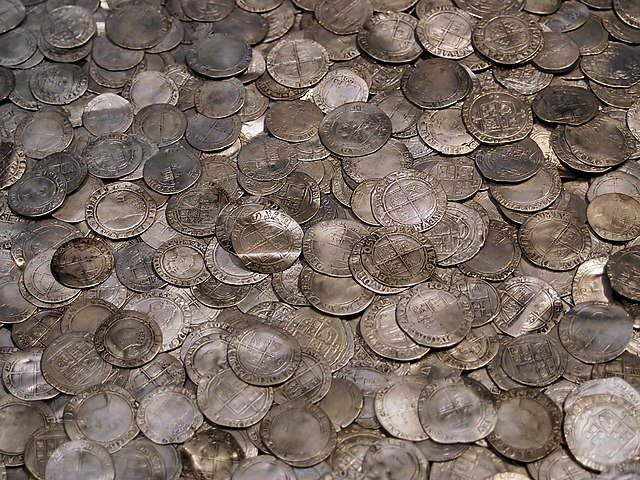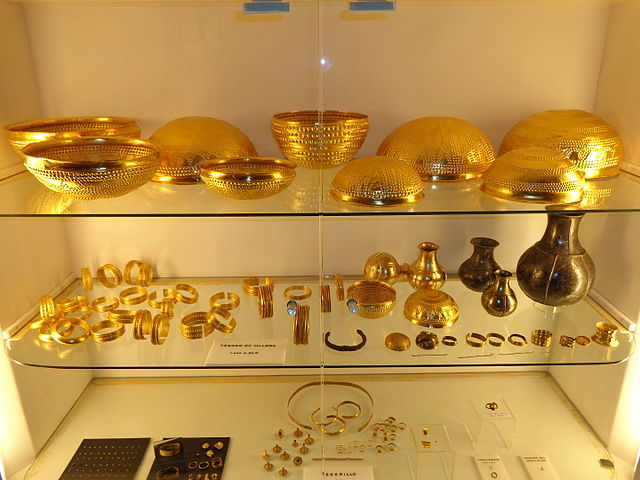The Thetford Hoard is a hoard of Romano-British metalwork found by Arthur and Greta Brooks at Gallows Hill, near Thetford in Norfolk, England, in November 1979, and now in the British Museum. Dating from the mid- to late-4th century AD, this hoard is a collection of thirty-three silver spoons and three silver strainers, twenty-two gold finger rings, four gold bracelets, four necklace pendants, five gold chain necklaces and two pairs of necklace-clasps, a gold amulet designed as a pendant, an unmounted engraved gem, four beads, and a gold belt-buckle decorated with a dancing satyr. A small cylindrical lidded box made from shale also belonged to the hoard.
22 finger rings from the Thetford Hoard
Shale box, part of the hoard, probably containing the smaller items.
The rings from the hoard
A hoard or "wealth deposit" is an archaeological term for a collection of valuable objects or artifacts, sometimes purposely buried in the ground, in which case it is sometimes also known as a cache. This would usually be with the intention of later recovery by the hoarder; hoarders sometimes died or were unable to return for other reasons before retrieving the hoard, and these surviving hoards might then be uncovered much later by metal detector hobbyists, members of the public, and archaeologists.
A hoard of silver coins, the latest about 1700 (British Museum).
Treasure of Villena, 1000 BC, the biggest prehistoric gold hoard in Western Europe. Discovered in 1963.





